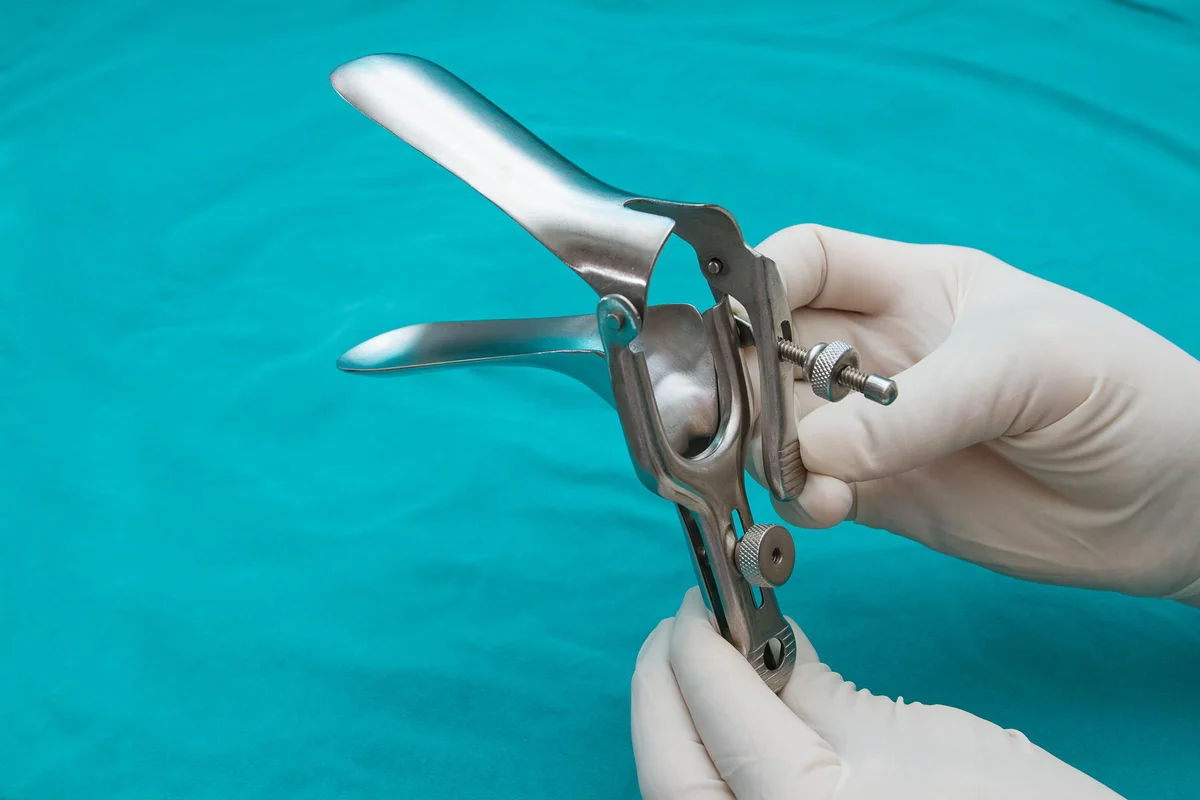As Sarah*, 32, suffered through pain during a colposcopy — a procedure to examine the cervix, vagina and vulva for possible cervical cancer — the healthcare provider (HCP) performing the procedure delivered a comment Sarah said she’ll never forget.
“These are the things we're expected to go through as women.”
The doctor had been kind and comforting during the entire procedure, and Sarah understood the doctor was trying to be sympathetic, but she was stunned by the words.
“The women who did the colposcopy treated me very well and were wonderful and supportive, and yet it was still one of the most painful and traumatic experiences of my life,” Sarah said.
Thankfully for Sarah, the results of the procedure were benign. Months later, when she secured an appointment with another OB-GYN, the new doctor mentioned that sedation and anesthesia were available options for invasive procedures, such as a colposcopy, if she ever needed one again — all Sarah had to do was ask.
She recalled past experiences with other providers, such as the significant pain she experienced for a previous IUD insertion, and again when a different provider removed the device. Sarah wasn’t offered pain management either time. At this point, Sarah was considering another IUD, and, while she was relieved to know there were options for making the process more comfortable, it left her wondering why pain management isn’t regularly offered unless a patient asks.
“So much of this is just systemic,” she said.
The pain burden for women
If you visit an online forum discussing gynecological procedures, from Pap test to biopsies, you'll find that many women share similar stories about experiencing significant pain despite being told they’d feel little more than mild cramping or discomfort. Women who hadn’t given birth wondered if they experienced more pain for that reason and weren’t counseled about that possibility. In many cases, pain management was rarely offered and some women said HCPs refused to stop the procedure or dismissed their expressed pain.
A U.S. review of literature on pain management procedures encourages pain control management for patient comfort during gynecological procedures, but the general consensus in online discussions is that women’s pain in general has historically been dismissed or undertreated often, leading to gynecological practices that minimize or dismiss the potential for pain during invasive procedures.
“One of the major problems with our current medical system is that there’s so little time usually allotted for an exam, and many people don't want to get into time-consuming but very important issues surrounding these procedures,” said Dr. Mary Jane Minkin, a clinical professor of obstetrics, gynecology and reproductive sciences at Yale University School of Medicine and a member of the HealthyWomen Women’s Health Advisory Council. “Sometimes we just need to say, ‘This is very important, and we need to set aside more time to address this.’”
There isn’t a large body of research measuring pain from invasive gynecological procedures, but one UK study of hysteroscopies — a procedure where a provider looks inside the uterus using a flexible tube to diagnose abnormal bleeding — found that patients’ ratings of pain did not match estimates from clinicians. A UK advocacy group, Campaign Against Painful Hysteroscopy, works to provide information to women before their procedures about the varying levels of pain they could experience, and the pain relief options available before, during and after their procedures.
Stacy Holmstedt, a 46-year-old software designer from Phoenix, had a similar experience to Sarah’s. After growths in her uterus and ovaries continued to grow for five years, Holmstedt agreed to undergo an endometrial biopsy to rule out the possibility of cancer. Her doctor never told her that anesthesia or sedation were options.
“We didn't discuss pain ahead of the procedure, and to be honest, I walked in thinking it wasn't going to be a big deal,” Holmstedt said.
As she researched endometrial biopsies online before her procedure, Holmstedt read articles telling her she should prepare for pain that would resemble menstrual cramps. She planned to take over-the-counter ibuprofen in advance of the procedure and do some deep breathing to get through it.
“The pain was so much worse than I had been prepared to expect,” Holmstedt said. “I tried hard to stay calm and quiet because I had never been through childbirth and felt like a giant wimp, but each scrape was literally causing me to see stars before my eyes. All I could do was moan into the wall next to my face.”
One doctor’s approach
Dr. Huma Farid, an obstetrician/gynecologist at Beth Israel Deaconess Medical Center in Boston and an instructor in obstetrics and gynecology at Harvard Medical School, encourages patients to discuss pain management before invasive procedures.
“Patients do ask and should ask about pain relief,” she said. “Sometimes the process of numbing the cervix can be more painful than the procedure, but I think it’s important to ask.”
Farid said that providing anesthesia often requires one or more painful injections and because procedures such as endometrial biopsies and IUD insertions are relatively quick, receiving multiple injections may actually be more painful than the procedure itself. She tells patients to take 600 mg of ibuprofen before procedures and advises them about the range of pain they could experience.
For in-office procedures like IUD insertion and colposcopies, Farid offers heating pads, ibuprofen and music to help patients cope. Hysteroscopies that involve removing a polyp or fibroid take place in the operating room, where anesthesia would be an option.
“However, for any procedure, even an IUD insertion or a biopsy, if the patient requests that it be done under general anesthesia, I will do it in the operating room,” Farid said. “Patients may have a variety of reasons for that request, and I try to always honor their desire for more anesthesia.”
Minkin, who herself has undergone three endometrial biopsies, said she’s open to sharing her own experiences about the procedures to help patients decide how they want to manage pain and to educate them about the level of pain they could feel. She noted how a recent endometrial biopsy patient — who had experienced significant pain with previous endometrial biopsies — wasn’t even aware the procedure had taken place since she took ibuprofen in advance and received medication to help her cervix dilate before the procedure.
“I think part of the problem is that women experience the discomforts of these different procedures very differently,” Minkin said. “I encourage both providers and patients to speak up — for providers to describe what the pain feels like as best they can and for patients to explain their anxieties and feelings about pain, especially from a previous procedure. “
Knowing your options
Holmstedt found another doctor — her third in a decade — after the one who performed the biopsy requested a second procedure.
Holmstedt told the new doctor she wanted a hysterectomy. When he said a biopsy was also needed, she expressed her concerns about pain. The doctor told her he would use twilight (also called conscious sedation) so she wouldn’t feel a thing and would give her a prescription for painkillers after the procedure. She said the biopsy was almost painless and her results were negative. Her hysterectomy months later also went smoothly.
Recently, she shared some of her story on Twitter after a person expressed outrage about the lack of pain management for invasive procedures.
“When I recalled all of the emotions of my first biopsy, I just wanted to let it all out through a tweet,” Holmstedt said. “Gynecological procedures are still treated like something that women shouldn't need anesthesia to handle. We're given less pain and anxiety management than dental work, and that's wrong.”
*Sarah’s last name was withheld by request
- Could You Have a Bruised Cervix? - HealthyWomen ›
- Hospitals Are Allowing Medical Students to Perform Pelvic Exams ... ›
- Pelvic Pain - HealthyWomen ›
- Fast Facts: What You Need to Know About IUDs - HealthyWomen ›







